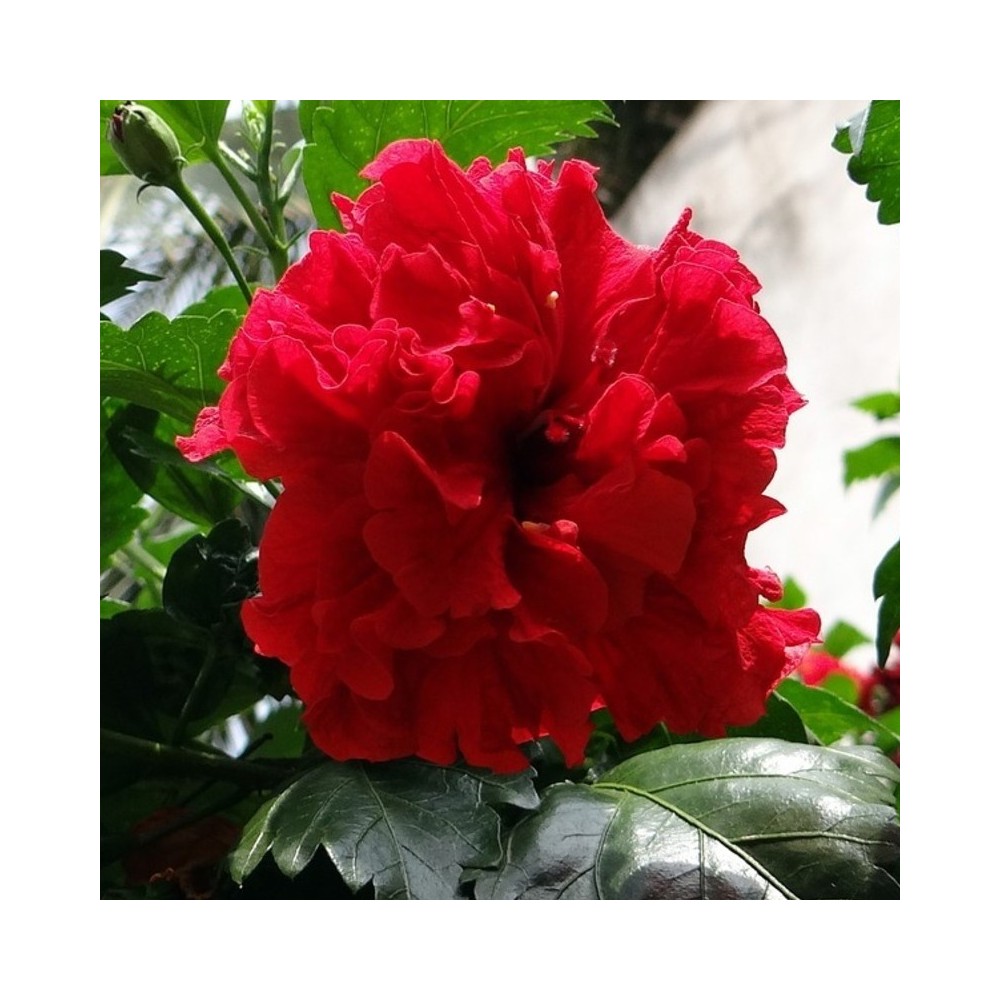



Hibiscus The word hibiscus derived from the ancient Greek hibiskos, the name for the plant known as marsh mallow or white mallow. Hibiscus is a genus of flowering plants in the mallow family, Malvaceae. It is quite large, containing more than 200 species that are native to warm-temperate, subtropical and tropical regions throughout the world. By recent count about 220 species of annuals, perennials, herbs, shrubs and trees belong to the genus Hibiscus.

Security policy visit http://nurserynature.com/content/10-security-policy

Shipping & Delivery Policy visit http://nurserynature.com/content/1-delivery

Cancellation & Refund Policy visit http://nurserynature.com/content/6-aeu-legal-revocation-terms
Hibiscus The word hibiscus derived from the ancient Greek hibiskos, the name for the plant known as marsh mallow or white mallow. Hibiscus is a genus of flowering plants in the mallow family, Malvaceae. It is quite large, containing more than 200 species that are native to warm-temperate, subtropical and tropical regions throughout the world. By recent count about 220 species of annuals, perennials, herbs, shrubs and trees belong to the genus Hibiscus. This is a genus of great diversity. Some hibiscuses originated in tropical regions of the world, other in temperate regions. Some are herbaceous, others woody. In habit they range from low-growing, spreading, types to upright, woody forms that reach up to six meter tall.
The flowers of most species open early in the morning and begin to droop and wilt by late afternoon. Most last only one day, but a few varieties have flowers that last two days or more. While most hibiscus flowers are odorless, a few are modestly fragrant. The hibiscus flower can be found in many colors and sizes, which will determine the specific type of flower. According to research information there are more than a thousand color options, but no blue or black in the true sense. The sizes will vary from 2 inch blooms to 12 inch blooms.
It is a beautiful plant. But apart from being beautiful, a hibiscus plant and flower is immensely useful too.
Hibiscus Planting & Care
To be a good grower is to be a good detective, able to diagnose and correct plant deficiencies caused by cultural problems, pests and diseases. It takes some practice to develop these skills. Learning what healthy plants look like is an important first step.
Light: Hibiscus requires at least 4 to 6 hours of direct sunlight to set the plenty flower bud, though in tropical climate a 25% shade over the plant is necessary for healthy growth.
Temperature: Hibiscus thrives well in temperature between 20°C to 32°C.
Soil: Hibiscus likes slightly acidic, well draining soil.
Water: Hibiscus needs lot of water in summer months. Keep the soil moist to touch. Mulch can be used to keep the moisture in the ground around the base of the plant.
Fertilizer: Slow released organic fertilizers do well for hibiscus plant and occasionally giving inorganic fertilizer will help the plants to healthy growth and flowering.
Hibiscus Problems, Pests and Diseases
Cultural Problems
Chloroisis: Chlorosis is a yellowing of leaf tissue due to a lack of chlorophyll. Chlorosis is typically caused when leaves do not have enough nutrients to synthesise all the chlorophyll they need. It can be brought about by a combination of factors including:
· Disease pathogens and damage from sucking insects.
· Temperature that are too hot or too cold.
· Too much or too little moisture in the soil.
· A specific mineral deficiency in the soil, such as iron or magnesium.
· Deficient nitrogen and/or proteins.
· Overwatering may cause leaves of tropical hibiscuses to yellow.
· Over exposure to systemic pesticides.
Flower Bud Drop: Flower bud drops is common in unhealthy hibiscuses. It is oftern the direct result of:
· Inadequate watering.
· The plants are being grown in clay containers and the whether is hot and windy.
· Insect or nematode infestation.
· Nutritional deficiencies.
· Overr fertilization of Nitrogen
Pests: Not many pests bother with the tough foliage of hibiscuses, but some may pose problems. Some of them are leaf miners, leaf rollers, beetles, grasshoppers, aphids, mealy bugs, scale insects, thrips and white flies. Scale is perehaps the toughest pest to control. Regular close inspection of hibiscus plants is key to preventing a buildup of scale.
Diseases
Fungal Diseases: The most common fungal disease of hibiscuses is leaf spot, brown spot or black spot that appear on foliage, espeically in wet weather. In addition, tropical hibiscuses sometimes get root rot. And other rarely affecting diseases are Bacterial Diseases and Viral D